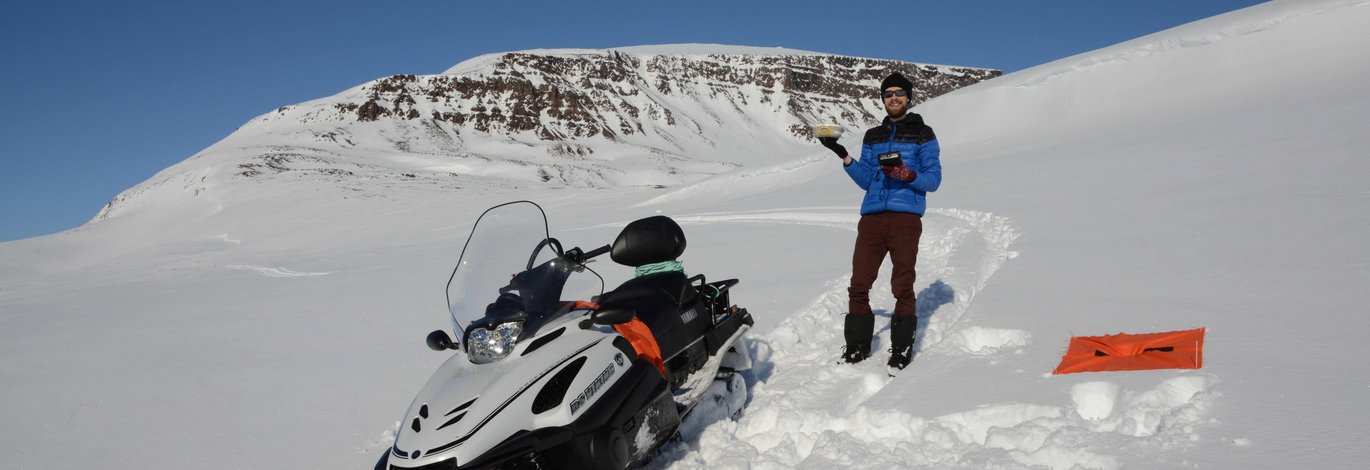Scientist of the month - November
Arctic by chance – this month we interviewed Andreas Westergaard-Nielsen from University of Copenhagen and how remote sensing and satellite imagery feeds the bigger picture

This month’s spotlight is on KU scientist Andreas Westergaard-Nielsen, who is interested in terrestrial ecosystems and image analysis. He works with ground-based sensors and UAV (Unmanned Aerial Vehicle) data as well as satellite remote sensing, climate data, and on-site measurements of ecosystem parameters. With the aim of increasing the understanding of ecosystem processes and responses to changes in climate, he is currently exploring the monitoring of nutrient status of plant communities using spectral measures. His scientific vision would be to increase our understanding of which role plant-available nitrogen plays for Arctic ecosystem response to changing climatic forcing, such as increasing temperatures, e.g. by estimating the nitrogen-pool in plant canopies locally aided by UAV spectral data as an upscaling to greater parts of the Arctic using satellites.
Andreas was studying image analysis and ecosystems, when in 2010 his colleague Birger Ulf Hansen showed him some GEM photo monitoring time series from Kobbefjord and Zackenberg. He then started working on those and finally decided to get a clearer picture on how to use landscape imaging to understand seasonal ecosystem-wide variations better. Using the opportunity to travel to Greenland, he enjoys the spell of the cool dry air, the silence and the magnificent undisturbed landscapes. Having worked at all three GEM main sites, he recognized the strength of linking the glacial, terrestrial, and marine environment across differing parts of Greenland.
The Arctic environment comes with some of the harshest working conditions, hence Andreas also got to experience the challenge and importance of planning every field season far ahead when it comes to logistics, power supply and gear, as improvising replacements can become interesting. As an important part of GEM’s long-term monitoring, automation of several devices is needed in winter when polar night, lack of power supply and extreme temperatures make any access before spring impossible, in order to create longer and consistent time series.
All of these challenges are best to be tackled with a well working team and so Andreas includes in his best memories, that “the most rewarding thing as a scientist is really the high level of freedom and diversity in your work life, and the time you get to spend with very enthusiastic and clever colleagues.”
To Andreas, the unique set of nature and people in the Arctic also come with a tradition for international collaboration and sharing of infrastructure and knowledge, which is highly valuable for the progress of research, but obviously also dependent on funding. He explains: “For future research in the region, I therefore hope that it will continue in a transparent and collaborative way, with respect for the nature and its inhabitants. And that it will still have an "Explorer" feel to it!”
When we asked him for advice for the next generation of students and scientists, he picks up on a matter of increasing importance, being the connection between science and the public. “My advice is to stay focused on the research and what we know so far. Academic research with its informed and systematic nature, is being challenged in parts of the world today. I think the right response to this is to continue to communicate our science and findings in an understandable and transparent way. It is a long haul but none the less important. My last advice is to team up with someone who shares your research or communication interests. It is more fun and oftentimes has greater impact.”